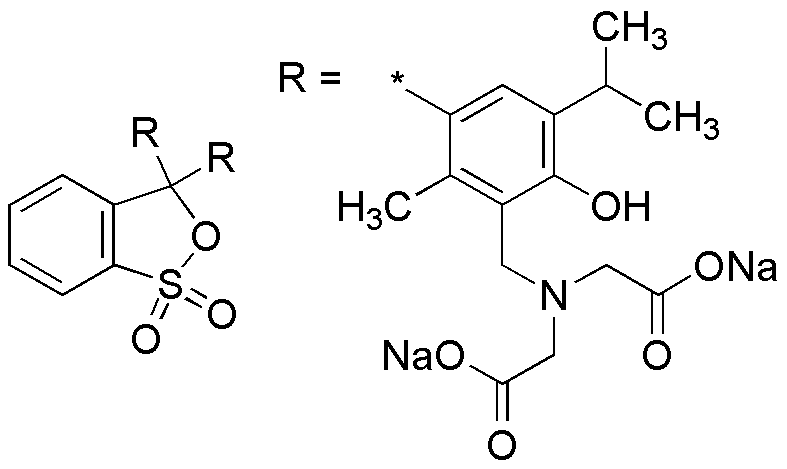Methylthymol Blue W/S is widely utilized in research focused on:
- pH Indicator: This compound serves as a reliable pH indicator in various laboratory settings, allowing researchers to visually assess acidity or alkalinity in solutions, which is crucial for many chemical reactions.
- Biochemical Assays: It is commonly used in biochemical assays to monitor enzyme activities and metabolic processes, providing essential data for researchers in biochemistry and molecular biology.
- Environmental Testing: Methylthymol Blue W/S is applied in environmental testing to detect pollutants in water samples, helping industries ensure compliance with environmental regulations.
- Food Industry: This chemical can be used in food testing to monitor pH levels during production, ensuring product quality and safety, which is vital for food manufacturers.
- Education: It is frequently employed in educational laboratories for teaching purposes, allowing students to conduct experiments related to acid-base chemistry in a hands-on manner.
General Information
Properties
Safety and Regulations
Applications
Methylthymol Blue W/S is widely utilized in research focused on:
- pH Indicator: This compound serves as a reliable pH indicator in various laboratory settings, allowing researchers to visually assess acidity or alkalinity in solutions, which is crucial for many chemical reactions.
- Biochemical Assays: It is commonly used in biochemical assays to monitor enzyme activities and metabolic processes, providing essential data for researchers in biochemistry and molecular biology.
- Environmental Testing: Methylthymol Blue W/S is applied in environmental testing to detect pollutants in water samples, helping industries ensure compliance with environmental regulations.
- Food Industry: This chemical can be used in food testing to monitor pH levels during production, ensuring product quality and safety, which is vital for food manufacturers.
- Education: It is frequently employed in educational laboratories for teaching purposes, allowing students to conduct experiments related to acid-base chemistry in a hands-on manner.
Documents
Safety Data Sheets (SDS)
The SDS provides comprehensive safety information on handling, storage, and disposal of the product.
Product Specification (PS)
The PS provides a comprehensive breakdown of the product’s properties, including chemical composition, physical state, purity, and storage requirements. It also details acceptable quality ranges and the product's intended applications.
Certificates of Analysis (COA)
Search for Certificates of Analysis (COA) by entering the products Lot Number. Lot and Batch Numbers can be found on a product’s label following the words ‘Lot’ or ‘Batch’.
*Catalog Number
*Lot Number
Certificates Of Origin (COO)
This COO confirms the country where the product was manufactured, and also details the materials and components used in it and whether it is derived from natural, synthetic, or other specific sources. This certificate may be required for customs, trade, and regulatory compliance.
*Catalog Number
*Lot Number
Safety Data Sheets (SDS)
The SDS provides comprehensive safety information on handling, storage, and disposal of the product.
DownloadProduct Specification (PS)
The PS provides a comprehensive breakdown of the product’s properties, including chemical composition, physical state, purity, and storage requirements. It also details acceptable quality ranges and the product's intended applications.
DownloadCertificates of Analysis (COA)
Search for Certificates of Analysis (COA) by entering the products Lot Number. Lot and Batch Numbers can be found on a product’s label following the words ‘Lot’ or ‘Batch’.
*Catalog Number
*Lot Number
Certificates Of Origin (COO)
This COO confirms the country where the product was manufactured, and also details the materials and components used in it and whether it is derived from natural, synthetic, or other specific sources. This certificate may be required for customs, trade, and regulatory compliance.


